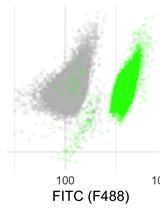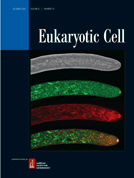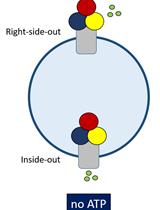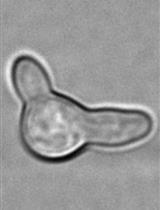- EN - English
- CN - 中文
Halo Assay for Toxic Peptides and Other Compounds in Microorganisms
Halo法测定微生物中毒肽和其他化合物
发布: 2016年11月20日第6卷第22期 DOI: 10.21769/BioProtoc.2025 浏览次数: 8827
评审: Yanjie LiChong HeAnonymous reviewer(s)

相关实验方案

一种基于流式细胞术的利用基因编码荧光报告测定酵母活细胞内pH值的方法
Catherine G. Triandafillou and D. Allan Drummond
2020年06月20日 4121 阅读
Abstract
We describe an assay for determination of toxicity in S. cerevisiae involving spotting of a toxic peptide on a lawn of yeast cells. This assay may be generalized to determine toxicity of a variety of compounds by substituting a putative toxic compound in place of the peptide. The general protocol may also be used to determine toxicity of any small compound toward another microorganism by replacing S. cerevisiae with the target microbe and modifying growth conditions accordingly.
Background
Di-/tripeptides are one of the major sources of nitrogen, carbon, and amino acids for all organisms. Synthetic peptides containing a toxic amino acid residue provide an experimental approach to measure peptide transport and/or utilization in Saccharomyces cerevisiae. Hydrolysis of internalized peptides by intracellular peptidases or proteases releases the toxic residue leading to an easily detectable zone (halo) of growth arrest on a lawn of cells plated in a Petri plate. For example, upon intracellular hydrolysis the toxic peptide Ala-Eth releases ethionine (Eth), a methionine antagonist which interferes with the incorporation of amino acids into proteins and with the normal methylation of DNA and other methylation pathways, thereby leading to cell death. When spotted onto a lawn of yeast cells, the transported dipeptide Ala-Eth will inhibit growth, and a clear ‘halo’ will form in the lawn of cells around the region where the Eth-containing toxic peptide is spotted (Figure 1A). The assay described here for determination of peptide toxicity in S. cerevisiae may be generalized as follows: (1) it may be modified to determine toxicity of any substrate by simply using a putative toxic compound in place of a peptide containing a toxic amino acid, or (2) it may be modified to determine toxicity of a substrate toward any microorganism by replacing S. cerevisiae in the assay with the target organism. It is a simple, inexpensive and relatively rapid method for determining substrate toxicities as modified for the specific organism and toxic moiety assayed.
Materials and Reagents
- 16 x 125 mm glass screw cap tubes (Thermo Fisher Scientific, Fisher Scientific, catalog number: 14-959-25C )
- 6-mm sterile blank paper discs (BD, catalog number: 231039 )
- Culture tube (Thermo Fisher Scientific, Fisher Scientific, catalog number: 14-956-6B )
- Sterile Petri plate (Thermo Fisher Scientific, Fisher Scientific, catalog number: FB0875713 )
- Saccharomyces cerevisiae (S. cerevisiae): such as W303 strain (MATa or MATα leu2-3,112 trp1-1 can1-100 ura3-1 ade2-1 his3-11, 15) (ATCC, catalog number: 208352 )
Note: Other strains can be used, although the growth medium will have to be adjusted to meet specific auxotrophic requirements. - Toxic peptides, such as Ala-Eth or Leu-Eth (Custom synthesized)
- Proline (Sigma-Aldrich, catalog number: P5607 )
- Agar (Sigma-Aldrich, catalog number: A1296 )
- Yeast nitrogen base without (NH4)2SO4 and amino acids (BD, DifcoTM, catalog number: 233510 )
- Dextrose (Sigma-Aldrich, catalog number: G7021 )
- Uracil (Sigma-Aldrich, catalog number: U1128 )
- Adenine hemisulfate salt (Sigma-Aldrich, catalog number: A9126 )
- Histidine-HCl (Sigma-Aldrich, catalog number: H-8000 )
- Leucine (Sigma-Aldrich, catalog number: L8000 )
- Tryptophan (Sigma-Aldrich, catalog number: T0254 )
- Noble agar (Sigma-Aldrich, catalog number: A5431 )
- Minimal proline (MP) broth (see Recipes)
- MP+ broth (see Recipes)
- MP+ growth plate (see Recipes)
- 1.1% Noble agar blanks (see Recipes)
Equipment
- Ruler
- Filter forceps (EMD Millipore, catalog number: XX6200006P )
- Vortex mixer (VWR, catalog number: 97043-562 )
- General purpose water bath (VWR, catalog number: 89501-476 )
- Microscope
Note: Any standard lab microscope can be used. - Incubator (set up at 30 °C) containing a rotator mixer (Thermo Fisher Scientific, Thermo ScientificTM, model: 1640Q )
- Hemocytometer (Thermo Fisher Scientific, Fisher Scientific, catalog number: 0267151B )
- Tabletop centrifuge (Eppendorf, model: 5810R )
Software
- ImageJ (www.imagej.net)
Procedure
文章信息
版权信息
© 2016 The Authors; exclusive licensee Bio-protocol LLC.
如何引用
Cai, H., Hauser, M., Naider, F. and Becker, J. M. (2016). Halo Assay for Toxic Peptides and Other Compounds in Microorganisms. Bio-protocol 6(22): e2025. DOI: 10.21769/BioProtoc.2025.
分类
微生物学 > 微生物细胞生物学 > 基于细胞的分析方法
细胞生物学 > 基于细胞的分析方法 > 转运
您对这篇实验方法有问题吗?
在此处发布您的问题,我们将邀请本文作者来回答。同时,我们会将您的问题发布到Bio-protocol Exchange,以便寻求社区成员的帮助。
提问指南
+ 问题描述
写下详细的问题描述,包括所有有助于他人回答您问题的信息(例如实验过程、条件和相关图像等)。
Share
Bluesky
X
Copy link













